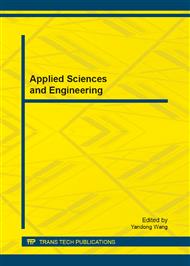p.778
p.782
p.787
p.792
p.798
p.802
p.808
p.814
p.820
The Factors Influcing Energy Transfer Efficiency of Micro-Actuator
Abstract:
Micro-actuators using giant magnetostrictive material as the core of drive components are becoming more and more widely used in the field of precise micro-actuator. In order to improve the energy transfer efficiency of the micro-actuator, reduce energy losing as heat and improve the working accuracy of micro-actuator.The relationship of pre-compression stress, magnetoconducivity and electromechanical coupling factor has been analyzed in the theory; A reasonable composition form of bias magnetic field has been put out; The relationship between bias magnetic field and electromechanical coupling factor has been analyzed; The configuration and size of coils have been optimized; The relationship between bias magnetic field and electromechanical factor has been discussed and experiments on correlative fields have been accomplished. When GMM is driven by constant magnetic field, measures like optimizing pre-compression stress, configuration and size of coils can be taken to improve giant magnetostrictive energy transfer efficiency and working performance of micro-actuator so that the driving performance can reach the best.
Info:
Periodical:
Pages:
808-813
Citation:
Online since:
September 2012
Authors:
Price:
Сopyright:
© 2012 Trans Tech Publications Ltd. All Rights Reserved
Share:
Citation:


